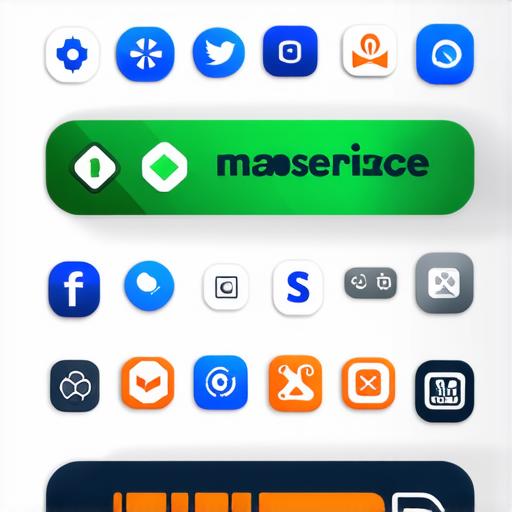Which technology is most effective for developing mobile applications?

In recent years, cross-platform app development has become an increasingly popular choice for mobile app developers. With the rise of smartphones and other mobile devices, it’s no longer enough to have a separate app for each platform (iOS and Android). Instead, many developers are turning to cross-platform development tools that allow them to create apps that can run on multiple platforms with a single codebase.
Flutter: The Fastest-Growing Cross-Platform Development Tool
Flutter is a relatively new cross-platform development tool that was created by Google in 2017. Since then, it has quickly become one of the most popular choices for mobile app developers due to its fast development cycle and ability to create high-quality, native-like apps across multiple platforms.
One of the key advantages of Flutter is its use of the Dart programming language. Dart is a statically-typed, object-oriented language that was designed specifically for mobile app development. It offers many benefits over other languages such as Java or Swift, including faster compile times, better performance, and more efficient memory usage.
Flutter also has a large and active community of developers who constantly contribute to the tool’s open-source codebase. This means that there are many pre-built widgets and plugins available that can help streamline development and save time.
Another advantage of Flutter is its ability to create truly native-like apps across multiple platforms. Flutter uses a custom rendering engine called Skia, which allows it to render graphics in a way that’s optimized for each platform. This means that apps built with Flutter can look and feel just as good on iOS or Android as they do on any other platform.
Despite its many advantages, Flutter is still a relatively new tool and does have some limitations. For example, it can be more difficult to find experienced developers who are familiar with Dart and the Flutter framework. Additionally, Flutter’s native-like rendering may not be suitable for all types of apps, particularly those that require complex graphics or animations.
Real-World Examples of Successful Flutter Apps
Despite its relative newness, Flutter has already produced many successful cross-platform apps. One of the most well-known is the popular mobile banking app, Simple. Simple was built using Flutter and has been praised for its speed, stability, and user-friendly interface.
Another example of a successful Flutter app is the popular shopping app, Wish. Wish has over 100 million active users and is available on both iOS and Android devices. The app’s fast development cycle and ability to create native-like apps across multiple platforms have helped it stand out in a crowded market.
React Native: A Popular Choice for Cross-Platform Development
React Native is another popular cross-platform development tool that was created by Facebook. Like Flutter, React Native uses a single codebase to create apps that can run on multiple platforms. However, it uses JavaScript instead of Dart and has a larger and more established developer community.
One of the main advantages of React Native is its ability to use existing JavaScript libraries and frameworks. This means that developers can leverage their existing knowledge of JavaScript and use popular tools like Redux and GraphQL to build cross-platform apps quickly and efficiently.
React Native also has a large number of pre-built components and plugins available, which can help streamline development and save time. Additionally, React Native’s ability to create native-like apps across multiple platforms has made it a popular choice for mobile app developers.
Despite its many advantages, React Native does have some limitations. For example, it can be more difficult to find experienced developers who are familiar with both JavaScript and the React Native framework. Additionally, React Native’s use of a bridge between the JavaScript code and the native platform means that it may not perform as well as some other tools on certain platforms.
Real-World Examples of Successful React Native Apps
Despite its relative newness, React Native has already produced many successful cross-platform apps. One of the most well-known is the popular social media app, Instagram. Instagram was built using React Native and has been praised for its speed, stability, and user-friendly interface.
Another example of a successful React Native app is the popular ride-sharing app, Uber. Uber was one of the first major companies to adopt React Native for cross-platform development and has since become a leader in the field. The app’s ability to create native-like apps across multiple platforms has helped it stand out in a crowded market.
Xamarin: A Microsoft-Backed Cross-Platform Development Tool
Xamarin is a cross-platform development tool that was created by Microsoft in 2011. Like Flutter and React Native, Xamarin allows developers to create apps that can run on multiple platforms with a single codebase. However, it uses C instead of Dart or JavaScript and has a larger and more established developer community.
One of the main advantages of Xamarin is its ability to use existing .NET frameworks and libraries. This means that developers can leverage their existing knowledge of C and use popular tools like Entity Framework and ASP.NET to build cross-platform apps quickly and efficiently.
Xamarin also has a large number of pre-built components and plugins available, which can help streamline development and save time. Additionally, Xamarin’s ability to create native-like apps across multiple platforms has made it a popular choice for mobile app developers.
Despite its many advantages, Xamarin does have some limitations. For example, it can be more difficult to find experienced developers who are familiar with both C and the Xamarin framework. Additionally, Xamarin’s use of a bridge between the C code and the native platform means that it may not perform as well as some other tools on certain platforms.
Real-World Examples of Successful Xamarin Apps
Despite its relative newness, Xamarin has already produced many successful cross-platform apps. One of the most well-known is the popular enterprise app, Microsoft Office Lens. Office Lens was built using Xamarin and has been praised for its speed, stability, and user-friendly interface.
Another example of a successful Xamarin app is the popular mobile payment app, Venmo. Venmo was one of the first major companies to adopt Xamarin for cross-platform development and has since become a leader in the field. The app’s ability to create native-like apps across multiple platforms has helped it stand out in a crowded market.
Conclusion: Which Technology is Most Effective for Cross-Platform App Development?
In conclusion, there is no one-size-fits-all answer to which technology is most effective for cross-platform app development. Each tool has its own advantages and limitations, and the best choice will depend on a variety of factors, including the developer’s existing knowledge and experience, the complexity of the app, and the target platform.
